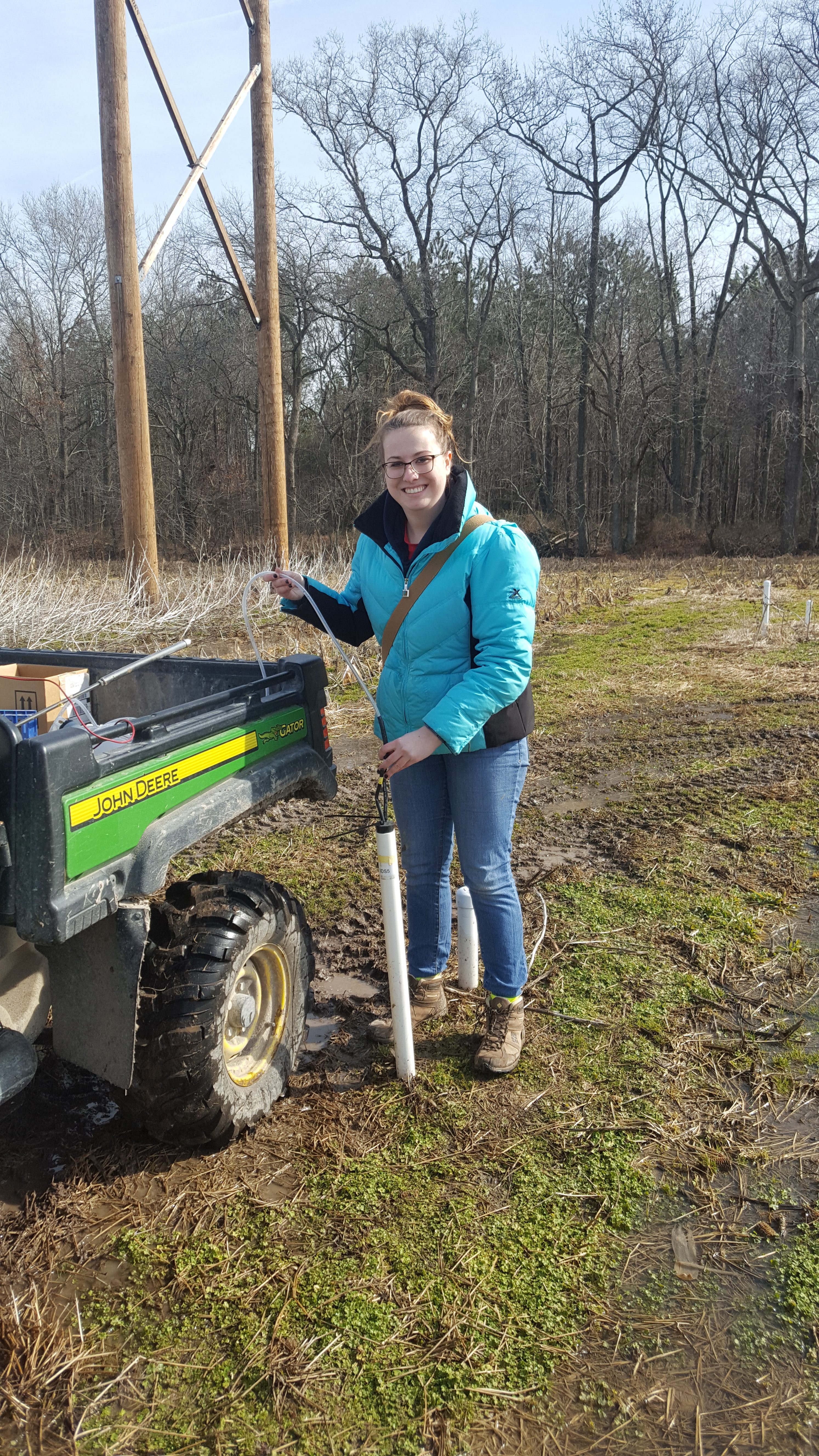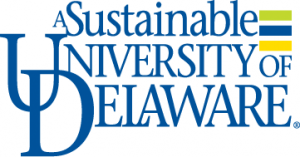Delaware Environmental Institute

Lauren Mosesso, Helping Farmers Save Money and Be Environmental Stewards
Lauren Mosesso, UD Ph.D. candidate and DENIN Environmental Fellow,loves the applicability of her work with advisor Dr. Amy Shober, professor and nutrient management extension specialist: “Farmers tell you their problems and that’s how your research is led,” Mosesso says.
She is trying to understand how phosphorus moves through soil on the Delmarva Peninsula. The goal of her research is to develop and modify best management practices for farmers so they can save money and time by knowing whether phosphorus will be lost through the soil to adjacent drainage ditches if manure is applied to fields. This increased efficiency will also protect water quality.
Farms on the Delmarva Peninsula produce over 550 million broilers—chickens raised for meat—each year. This high density of birds creates a nutrient management challenge. The manure may be applied to crops, but phosphorus is often lost because of the years of application. Excess phosphorus in water can lead to problems such as toxic algal blooms and dead zoneswhere people can’t drink, fish, or swim in the water, and conditions are harmful toaquatic life.
Mosessogrew up in suburban northern Virginia with parents who were not outdoorsy. But she was frequently at her grandfather’s house in rural Harford County, Maryland, where she would play in and by the creek that ran through theyard. It was here that she first noticed that topsoil in nature doesn’t contain the white blobs of perlite that store-bought potting soil does.
She earned a B.S. in environmental geology with a minor in chemistry at the University of Mary Washington in Fredericksburg, Virginia.She started as a geology major, but one of the professors she had early on in college was a soils specialist and she quickly got hooked. She studiedurban soilsand interned at theUSGeological Survey (USGS) and the Smithsonian Environmental Research Center in Maryland.
Mosesso started at UD as a master’s degree student, but gladly took Shober up on her offer to switch to a Ph.D. program, and she’s now in year three.
Mosesso just finished a fairly large project that was going to be her master’s project. She usedhydrogren and oxygentracer isotopes with mixing models to separate out theproportion of water moving quickly through the soil using preferential flow pathways versus water moving more slowly through matrix pathways. Water moving through soil more quickly is more likely to carry phosphorus that is lost to adjacent drainage ditches.
She is building on this project for her Ph.D. She is irrigating asmall plot with water to which a hydrogen isotope tracer has been added.This will allow her to see how water and phosphorus is moving within the soil. Her results will improve the Annual Phosphorus Loss Estimator model (APLE)for theChesapeake and Delaware Bay watersheds by enabling it to determine the amount of phosphorus lost through the subsurface.
Mosesso credits Kathy Conko, with whom she worked at the USGS in northern Virginia as an undergrad, as a formative mentor. Conko taught Mosesso not to be afraid to network. She told Mosesso how to get into graduate school and get it paid for. “She was really a big push I didn’t have before,” says Mosesso.
Those new habits were useful when Mosesso recently had to reach out to technical experts for help in recovering data when one of two sample collectors at a study site malfunctioned, unbeknownst to Mosesso for quite some time. She worked with a committee member to mathematically interpolate the data from the data they did have. She is grateful to have gained the confidence to reach out to people she’s never met to solve problems with her research.
Mosesso’s enthusiasm for the environment spills over into her volunteer and recreation time. She is president of the Delaware student chapter of the American Water Resources Association, for which she helps organize events and projects with Delaware’s professionalchapter. She’s also vice president of the university’s Plant and Soil Sciences Graduate StudentAssociation and leads a community garden for grad students in the College of Agriculture and Natural Resources. Many international grad students rent plots, and Mosesso enjoys the interactions at and around the gardens. “This is a high-stress program,” she says, “so youneed outlets where you can be social.”
By Joy Drohan, Eco-Write, LLC
Photo Credit: Amy Collick


